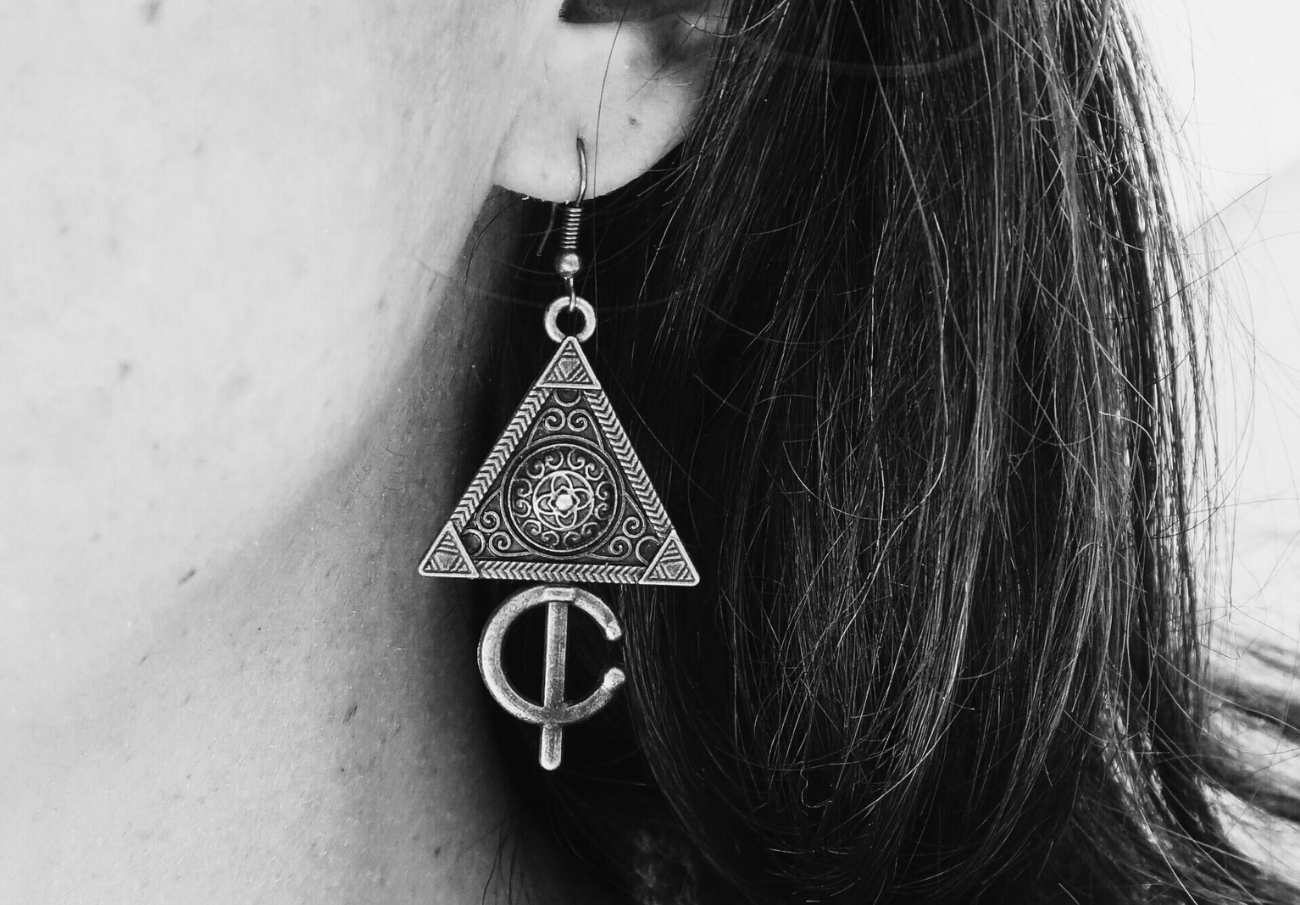Amazigh fibula, “Taẓṛẓit”
ⴰⵎⴰⵣⵉⵖ ⴼⵉⴱⵓⵍⴰ, “ⵜⴰⵣⵔⵣⵉⵜ”
The Amazigh fibula, known as “Taẓṛẓit” in the Souss region, is a traditional brooch integral to the cultural heritage of the Amazigh (Berber) people of North Africa. This ornamental yet functional piece has been used for centuries to fasten garments and serves as a symbol of identity and artistry among various Amazigh tribes.
Historical Significance:
The use of fibulae in North Africa dates back to ancient times, with evidence suggesting their presence since the Bronze Age. These brooches were traditionally crafted by Jewish silversmiths and have been a staple in Amazigh attire, reflecting a blend of cultural influences and local craftsmanship.
ⴰⵎⴽⴰⵏ ⵉ ⴷ ⴼⵓⵙ ⴷ ⵙⴻⴷⴷⵓⴽ, ⴰⴷ ⵉⴳ ⵉⵍⵍⴰⵏ ⵜⴰⴼⵓⴽⵜ.
Design and Craftsmanship:
Typically, the Amazigh fibula consists of a triangular base beneath a ring or semicircle, accompanied by a pin used to hold unsewn garments together. The designs vary among tribes, with some featuring elaborate enamelwork in vibrant colors like yellow, green, and blue, while others are adorned with intricate silver filigree or embedded with coral and amber beads. The triangular shape is often associated with fertility and the home, symbolizing a woman and a tent.
Regional Variations and Nomenclature:
The fibula is known by different names across various Amazigh regions:
Souss Region (Morocco): Referred to as “tazarzit,” a term possibly derived from “azar,” meaning “hair,” indicating its use in hair braids.
Rif Region (Morocco): Called “tisighnast,” meaning “pin,” derived from the root related to the concept of pinning or securing in Amazigh languages.
Kabylie (Algeria): Known as “afzim” or “abzim,” from the Arabic “ibziim,” meaning “buckle.”
Moroccan Arabic: Terms include “bazima,” “khalaala,” or “katfiya.”
Tunisian Arabic: Referred to as “khlel.”


Practical and Symbolic Uses
Beyond its practical function of fastening garments, the fibula holds significant symbolic value:
Garment Fastening: Medium-sized fibulae are used to secure unsewn garments, with the pins often pointing straight up, keeping draped clothing in place.
Hair Adornment: Smaller fibulae are incorporated into hair braids or worn as forehead jewelry, enhancing personal adornment.
Cultural Symbol: In contemporary times, the fibula has transcended its functional role to become a symbol of Amazigh identity and pride, especially in post-colonial contexts where cultural expression serves as a form of resistance and empowerment.
Contemporary Relevance
Today, the Amazigh fibula is not only a cherished heirloom but also a symbol of cultural resurgence. It features prominently in Amazigh art, jewelry, and even graffiti, embodying the enduring spirit and identity of the Amazigh people across North Africa.
In conclusion, the Amazigh fibula, or Taẓṛẓit, is a testament to the rich cultural tapestry of the Amazigh people. Its evolution from a practical garment fastener to a symbol of identity underscores the dynamic nature of cultural artifacts and their significance in the preservation and expression of heritage.


Leave a Reply